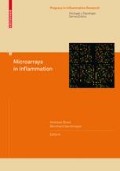Abstract
Despite inherent difficulties, the use of technologies in Omic such as DNA microarrays, that allow a comparison of global expression changes in thousands of genes between different conditions, appears to be a useful tool to study the influence of nutrition and gene-environment interactions in complex pathologies such as obesity, and thus to advance research.
The purpose of the present review is to provide some advice for fat specimen collection and RNA preparation in view of gene expression profiling analysis. Our data indicate that the use of RNA-stabilization reagents is not necessary. Isolated or cultured cells should be stored frozen in lysis buffer. Isolated adipose cells or pieces of adipose tissue must be shock-frozen in liquid nitrogen before storage. Total RNA extraction can then be performed using optimized tissue lipid RNA extraction systems. For clinical projects, fat biopsies of 0.5 g are recommended. Total RNA should be extracted using a modified tissue lipid extraction kit. Finally, some selected examples will show how previous transcriptomic approaches to human adipose tissue biopsies have contributed to advancing knowledge in the field of obesity, as much at the cellular as at the tissue level.
Access this chapter
Tax calculation will be finalised at checkout
Purchases are for personal use only
Preview
Unable to display preview. Download preview PDF.
References
Copland JA, Davies PJ, Shipley GL, Wood CG, Luxon BA, Urban RJ (2003) The use of DNA microarrays to assess clinical samples: the transition from bedside to bench to bedside. Recent Prog Horm Res 58: 25–53
Ruan H, Zarnowski MJ, Cushman SW, Lodish HF (2003) Standard isolation of primary adipose cells from mouse epididymal fat pads induces inflammatory mediators and down-regulates adipocyte genes. J Biol Chem 278: 47585–47593
Weisberg SP, McCann D, Desai M, Rosenbaum M, Leibel RL, Ferrante AW, Jr (2003) Obesity is associated with macrophage accumulation in adipose tissue. J Clin Invest 112: 1796–808
Xu H, Barnes GT, Yang Q, Tan G, Yang D, Chou CJ, Sole J, Nichols A, Ross JS, Tartaglia LA et al (2003) Chronic inflammation in fat plays a crucial role in the development of obesity-related insulin resistance. J Clin Invest 112: 1821–30
Cottam DR, Mattar SG, Barinas-Mitchell E, Eid G, Kuller L, Kelley DE, Schauer PR (2004) The chronic inflammatory hypothesis for the morbidity associated with morbid obesity: implications and effects of weight loss. Obes Surg 14: 589–600
Ziccardi P, Nappo F, Giugliano G, Esposito K, Marfella R, Cioffi M, D’Andrea F, Molinari AM, Giugliano D (2002) Reduction of inflammatory cytokine concentrations and improvement of endothelial functions in obese women after weight loss over one year. Circulation 105: 804–9
Clement K, Viguerie N, Poitou C, Carette C, Pelloux V, Curat CA, Sicard A, Rome S, Benis A, Zucker JD et al (2004) Weight loss regulates inflammation-related genes in white adipose tissue of obese subjects. Faseb J 18: 1657–69
Al-Shahrour F, Diaz-Uriarte R, Dopazo J (2004) FatiGO: a web tool for finding significant associations of Gene Ontology terms with groups of genes. Bioinformatics 20: 578–80
Cancello R, Henegar C, Viguerie N, Taleb S, Poitou C, Rouault C, Coupaye M, Pelloux V, Hugol D, Bouillot JL et al (2005) Reduction of macrophage infiltration and chemoat-tractant gene expression changes in white adipose tissue of morbidly obese subjects after surgery-induced weight loss. Diabetes 54: 2277–86
Poitou C, Viguerie N, Cancello R, De Matteis R, Cinti S, Stich V, Coussieu C, Gauthier E, Courtine M, Zucker JD et al (2005) Serum amyloid A: production by human white adipocyte and regulation by obesity and nutrition. Diabetologia 48: 519–28
Taleb S, Lacasa D, Bastard JP, Poitou C, Cancello R, Pelloux V, Viguerie N, Benis A, Zucker JD, Bouillot JL et al (2005) Cathepsin S, a novel biomarker of adiposity: relevance to atherogenesis. Faseb J 19: 1540–2
Author information
Authors and Affiliations
Editor information
Editors and Affiliations
Rights and permissions
Copyright information
© 2008 Birkhäuser Verlag Basel/Switzerland
About this chapter
Cite this chapter
Viguerie, N. (2008). Adipose tissue. In: Bosio, A., Gerstmayer, B. (eds) Microarrays in Inflammation. Progress in Inflammation Research. Birkhäuser Basel. https://doi.org/10.1007/978-3-7643-8334-3_5
Download citation
DOI: https://doi.org/10.1007/978-3-7643-8334-3_5
Publisher Name: Birkhäuser Basel
Print ISBN: 978-3-7643-8333-6
Online ISBN: 978-3-7643-8334-3
eBook Packages: Biomedical and Life SciencesBiomedical and Life Sciences (R0)

